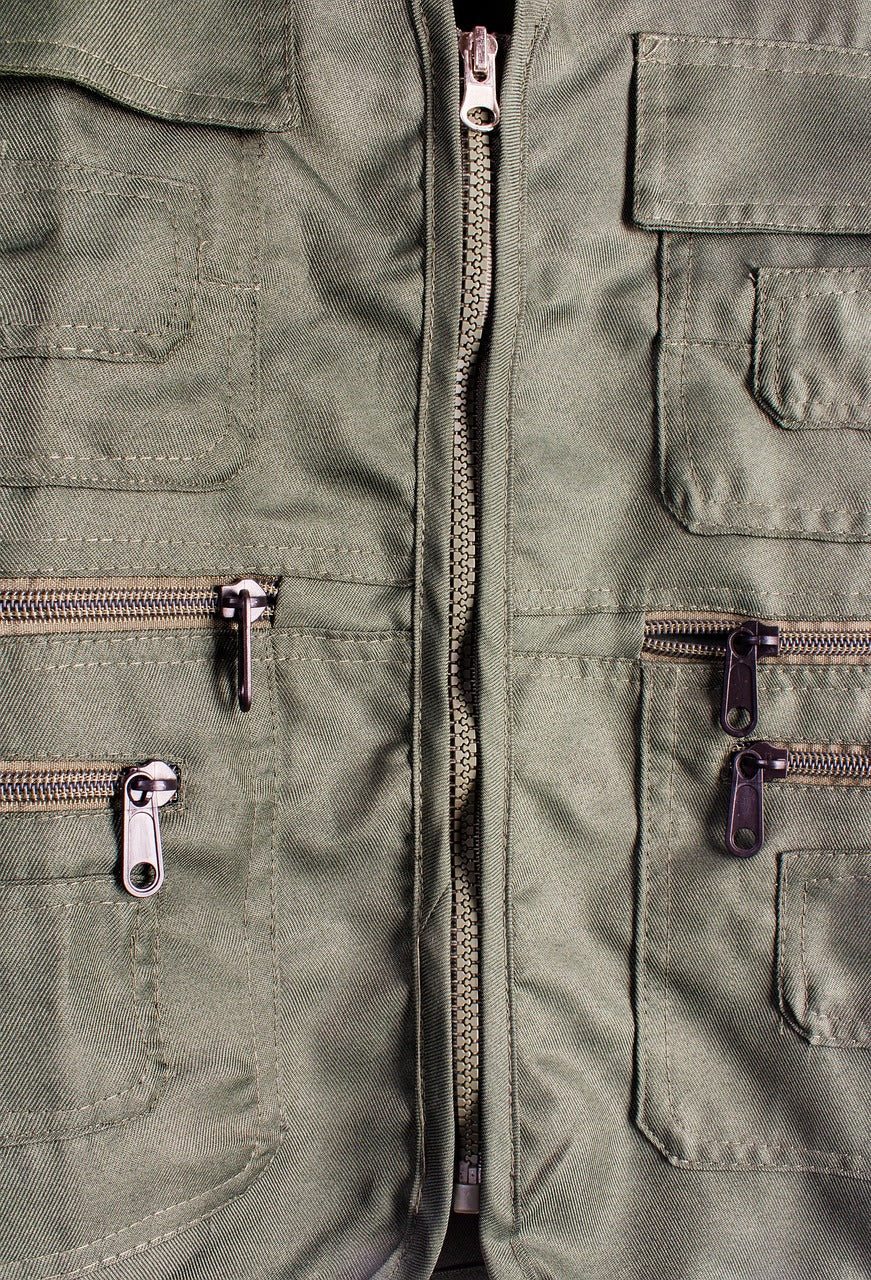In the world of fashion, personal expression is everything. Customizing clothing allows individuals to showcase their creativity, style, and personality in a unique way. One of the most versatile garments for customization is the vest. Whether it’s a denim vest, leather vest, or cotton vest, adding custom paint designs can turn a simple piece into a wearable work of art.
This guide will walk you through the process of customizing a vest with paints, from selecting the right materials to applying creative techniques and ensuring the longevity of your design.
Preparation
Choosing Your Vest
The first step in customizing a vest is choosing the right material. Different fabrics interact with paint in unique ways, so selecting the right one will impact the final result:
-
Denim Vests: Denim is a popular choice for painting because of its durable texture. It absorbs paint well and provides a stable surface for intricate designs.
-
Leather Vests: Leather requires specialized leather paints to maintain flexibility and prevent cracking. Proper preparation, including cleaning and priming, is essential.
-
Cotton Vests: Cotton is soft and breathable, making it suitable for fabric paints. However, multiple layers of paint may be necessary to achieve full opacity.
Gathering Materials
Having the right tools and supplies ensures a smooth painting process. Here’s what you’ll need:
-
Fabric Paints: Select high-quality paints based on the material of your vest. For leather, opt for leather paints to ensure a smooth, flexible finish.
-
Brushes: Use various brush sizes for different techniques—thin brushes for details, thick brushes for large areas.
-
Stencils and Tape: These help create precise, clean designs.
-
Palette and Mixing Tray: Essential for blending colors and achieving gradients.
-
Protective Gear: Gloves, aprons, and masks to keep your workspace clean.
Setting Up Your Workspace
A well-organized workspace enhances efficiency and minimizes mistakes:
-
Clean the Area: Ensure your workspace is free from dust and dirt.
-
Use a Flat Surface: Lay the vest on a sturdy table to maintain stability.
-
Good Lighting: Proper lighting helps with accuracy, especially for detailed work.
-
Ventilation: Work in a well-ventilated area to avoid inhaling paint fumes.
Design and Planning
Conceptualizing Your Design
Before applying paint, it’s important to plan out your design:
-
Draw Inspiration: Look at fashion magazines, online platforms, or nature for ideas.
-
Sketch First: Draw your design on paper to visualize the final look.
-
Plan the Layout: Consider the structure of the vest, ensuring the design aligns well with seams and pockets.
Transferring Your Design to the Vest
There are several methods to transfer your design onto the fabric:
-
Freehand Drawing: Use chalk or fabric pencils for direct sketching.
-
Stencils: Tape stencils in place for crisp, defined patterns.
-
Carbon Transfer Paper: Place the design on the vest and trace over it to transfer the outline.
Painting Techniques
Brushwork Basics
Mastering brush techniques ensures a professional-looking finish:
-
Consistent Strokes: Use steady, even strokes for smooth coverage.
-
Layering: Apply multiple thin layers instead of one thick coat to prevent cracking.
-
Blending: Use a wet brush technique to mix colors smoothly.
Using Stencils for Sharp Designs
Stencils are great for creating intricate patterns:
-
Preparation: Ensure the stencil is dry and flat against the fabric.
-
Application: Use a sponge or brush to dab paint instead of brushing side-to-side.
-
Removal: Carefully lift the stencil while the paint is still wet to avoid smudging.
Sponge and Spray Techniques
Adding texture enhances the artistic effect of your vest:
-
Sponge Dabbing: Creates a soft, gradient look perfect for backgrounds.
-
Spray Painting: Use fabric-safe spray paint for an urban or abstract style.
-
Splatter Effect: Flick a brush with diluted paint for an artistic, messy aesthetic.
Adding Details and Textures
Incorporating Mixed Media
To enhance the depth of your design, consider using additional materials:
-
Fabric Markers: Perfect for adding fine details and outlines.
-
Dye Techniques: Create faded effects or ombré designs.
-
Embroidery: Add texture by stitching around your painted designs.
Creating High Contrast and Visual Interest
Contrast helps bring designs to life:
-
Dark vs. Light Colors: Use opposing colors for a striking effect.
-
Layering Techniques: Overlay different shades to create a 3D effect.
-
Metallic and Glow-in-the-Dark Paints: These add unique highlights to your vest.
Setting and Sealing Your Design
Heat Setting
Setting the paint ensures longevity:
-
Ironing Method: Place a cloth over the design and press with a warm iron.
-
Heat Gun or Blow Dryer: A quick way to set the paint.
Sealing the Paint
Sealing protects the artwork from fading or peeling:
-
Acrylic Sealant Spray: Helps waterproof the design.
-
Fabric Sealant: For cotton and denim, this adds durability.
-
Leather Finisher: Use leather finisher to maintain the flexibility and longevity of leather-painted designs.
Styling Your Custom Vest
Integrating into Your Wardrobe
Your painted vest can be a standout fashion piece, adding a personal and artistic touch to various outfits. Whether dressing up or keeping it casual, here are some great ways to style it:
-
Casual Look: Pair with jeans and a t-shirt for everyday wear. A simple white or black tee helps highlight the custom artwork on your vest.
-
Edgy Street Style: Layer over a hoodie or leather pants for a bold and urban aesthetic. Sneakers or combat boots complete the look.
-
Festival Fashion: Combine with bold accessories such as chunky jewelry, bandanas, or statement boots to create a standout outfit perfect for concerts and outdoor events.
-
Business Casual Twist: Wear over a button-down shirt with tailored pants for a semi-formal yet stylish ensemble that merges artistic flair with professionalism.
-
Layering for All Seasons: In colder months, pair your vest with long-sleeve tops, knitted sweaters, or even a trench coat for warmth without compromising style.
Accessorizing
Enhance your vest’s aesthetic with creative accessories that complement its unique design:
-
Pins and Patches: Add extra elements to personalize your vest further. Enamel pins or embroidered patches allow for continuous customization.
-
Chains and Studs: For a punk or grunge look, attach metal embellishments to elevate the edgy appeal of your vest.
-
Layering with Other Clothes: Mix and match with jackets, scarves, or oversized shirts to create dynamic and stylish combinations.
-
Belt or Sash Addition: Cinch your vest with a belt for a structured, tailored appearance that enhances your silhouette.
-
Fabric Paint Highlights: If your vest has a painted design, consider adding subtle metallic or glow-in-the-dark accents for extra flair in different lighting conditions.
Maintenance and Care
To keep your custom vest in top condition, proper cleaning and storage methods are essential.
Cleaning and Storage
-
Hand Wash Only: Use cold water and mild detergent to preserve the artwork and fabric quality.
-
Avoid Harsh Scrubbing: Gently dab any stains instead of vigorous rubbing to prevent paint chipping or fading.
-
Air Dry: Avoid machine drying, as heat can fade the paint and weaken the fabric fibers over time.
-
Store Properly: Hang the vest on a padded hanger or fold it loosely in a breathable fabric bag to prevent creases and maintain its shape.
-
Avoid Direct Sunlight Exposure: Prolonged exposure to sunlight can cause colors to fade, so store it in a cool, shaded area.
Touch-ups and Repairs
Over time, touch-ups may be necessary to keep your vest looking fresh and vibrant:
-
Reapply Paint: Fill in any faded areas using matching fabric paint to maintain the original design.
-
Re-seal When Needed: Apply a fresh coat of sealant after several washes to reinforce durability and prevent cracking.
-
Fix Cracks: Use a small brush to blend in repairs seamlessly, ensuring that the vest maintains its polished appearance.
-
Strengthen Fabric Areas: If the fabric shows signs of wear, reinforce weak spots with fabric glue or stitching to prevent tears.
-
Revamp the Design: As your style evolves, consider adding new design elements or refreshing the artwork to keep your vest looking stylish and relevant.
By following these styling, accessorizing, and maintenance tips, your custom vest will remain a fashionable and long-lasting statement piece in your wardrobe.
(Source: @loveydoveydesigns)
Customizing a vest with paint is an exciting way to showcase your creativity and style. Whether experimenting with bold colors, intricate designs, or textured techniques, the possibilities are endless.
For the best results, use Angelus Direct’s premium leather acrylic paints to ensure long-lasting and vibrant designs. Whether working on denim, leather, or cotton, high-quality paints and sealants make all the difference in achieving a professional finish.
FAQs
How do you prevent fabric paint from cracking?
Apply thin layers, allowing each to dry before adding the next. Using a fabric medium can also improve flexibility.
What are the best paints for leather vests?
Specialized Angelus Direct leather paints ensure durability and prevent cracking on leather surfaces.
How can you ensure the paint stays on through washes?
Proper heat-setting and sealing techniques are essential for wash resistance.
Can you paint over an already painted vest?
Yes, but it’s best to lightly sand or prime the surface before adding new layers.
What are some common mistakes to avoid when painting a vest?
Avoid thick paint layers, skipping the heat-setting process, and using incompatible paint types for different materials.

